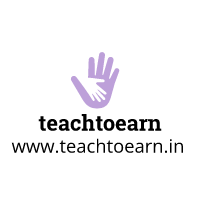Forget textbooks and rigid schedules – classrooms are transforming into dynamic digital landscapes! Fueled by the internet and innovative tools, the digital classroom bursts onto the scene as a personalized, flexible, and accessible alternative to traditional learning. Imagine a world of knowledge at your fingertips, anytime, anywhere, collaborating with peers across continents, while technology tailors itself to your unique learning style. This, my friends, is the empowering reality of the digital classroom, where curiosity thrives, boundaries blur, and the pursuit of knowledge becomes an exciting, interactive journey. Join us as we unveil how the digital classroom is revolutionizing education, making it more accessible, engaging, and effective than ever imagined – a transformation poised to impact you, the student, in profound ways!
What is a Digital Classroom:
A digital classroom is a learning environment that integrates technology to enhance and support the educational process. This can encompass a variety of forms, from using laptops and tablets in a physical classroom to fully virtual learning experiences happening entirely online. The core elements and resources which forms a digital classroom include :

A Small Space

Computers

Internet Connection
Here are some key characteristics of a digital classroom
Personalized learning:
- Adaptive learning platforms: Adjust difficulty level and recommend relevant content based on individual progress.
- Variety of resources: Cater to different learning styles with simulations, gamified learning, interactive videos, etc.
- Self-paced learning: Learners can progress at their own pace and revisit modules for better understanding.
Flexibility and accessibility:
- Location independence: Learn from anywhere, anytime with an internet connection.
- 24/7 access: Enables asynchronous learning and accommodates diverse schedules.
- Reduced barriers: Potentially more cost-effective compared to traditional coaching classes with high fees.
Collaboration and interaction:
- Online communities: Connect with learners and instructors for discussions, projects, and knowledge sharing.
- Virtual classrooms: Participate in real-time, interactive sessions similar to physical classrooms.
- Global collaboration: Connect with learners worldwide, enriching perspectives and fostering cultural understanding.
Advantages of the Digital Classroom:
- Accessibility: Unlike coaching classes confined by location and timings, the digital classroom transcends geographical boundaries and operates 24/7. Learners can access educational resources from anywhere, anytime, at their own pace.
- Personalized Learning: With the help of adaptive learning platforms and AI-powered tools, the digital classroom tailors the learning experience to individual needs. It identifies strengths and weaknesses, recommending relevant content and adjusting the difficulty level to optimize knowledge retention.
- Variety of Resources: The internet provides a vast repository of educational materials, including interactive courses, simulations, educational games, video lectures, and e-books. This diversity caters to different learning styles and preferences, making the learning process more engaging and effective.
- Cost-Effectiveness: Compared to the often hefty fees charged by coaching classes, the digital classroom offers numerous free or low-cost options. Open educational resources (OERs), educational websites, and even YouTube channels can provide high-quality content without financial burden.
- Global Collaboration: Online platforms connect learners from around the world, fostering collaboration and knowledge sharing. Learners can participate in discussions, forums, and online communities, enriching their understanding through diverse perspectives and experiences.
Challenges and Considerations:
While the digital classroom offers numerous advantages, it’s important to acknowledge some challenges:
- Self-Discipline: Learning independently requires a high degree of self-discipline and time management skills. Without the structure and guidance of a physical classroom, some learners might struggle to stay motivated and focused.
- Technical Barriers: Unequal access to technology and reliable internet connectivity can hinder participation in the digital classroom, creating an equity gap.
- Social Interaction: While online platforms offer opportunities for collaboration, they might not fully replicate the social interaction and emotional support provided by a physical classroom.
The Way Forward:
The digital classroom is not intended to replace traditional coaching classes entirely. Instead, it offers a complementary and dynamic alternative, catering to diverse learning styles and needs. By effectively combining the best aspects of both approaches, we can create a more inclusive and enriching learning experience for all.
Here are some ways to bridge the gap:
- Blended Learning: Integrate online resources and tools into traditional classroom settings, creating a hybrid learning environment that leverages the strengths of both approaches.
- Bridging the Digital Divide: Governments and educational institutions must invest in initiatives to ensure equitable access to technology and internet connectivity for all learners.
- Developing Social-Emotional Learning (SEL) Skills: Online platforms can incorporate features and activities that nurture social-emotional skills, fostering a sense of community and connection among learners.
So, are you ready to break free from the confines of traditional classrooms and embrace the dynamic world of digital learning? Join Teach to Earn, your gateway to the revolutionising power of computer-aided education. With us, you won’t just acquire knowledge; you’ll become an active participant in its creation. Collaborate with fellow learners across the globe, explore personalised learning paths, and unlock your full potential in a borderless universe of knowledge. Don’t be a bystander in this educational evolution; join Teach to Earn today and become a pioneer in shaping the future of learning, one byte at a time! Let’s revolutionise the way we learn together.
